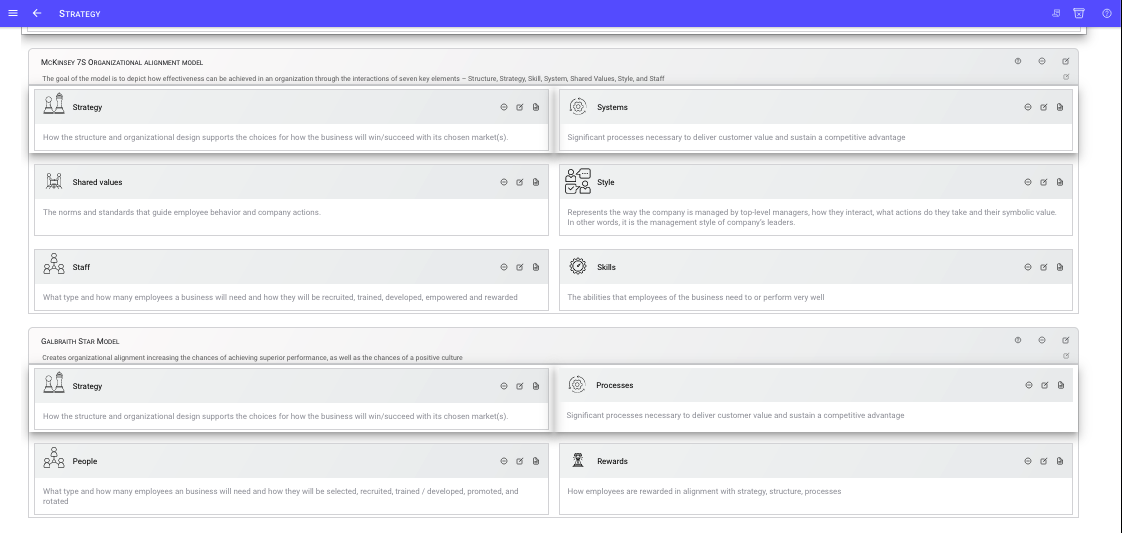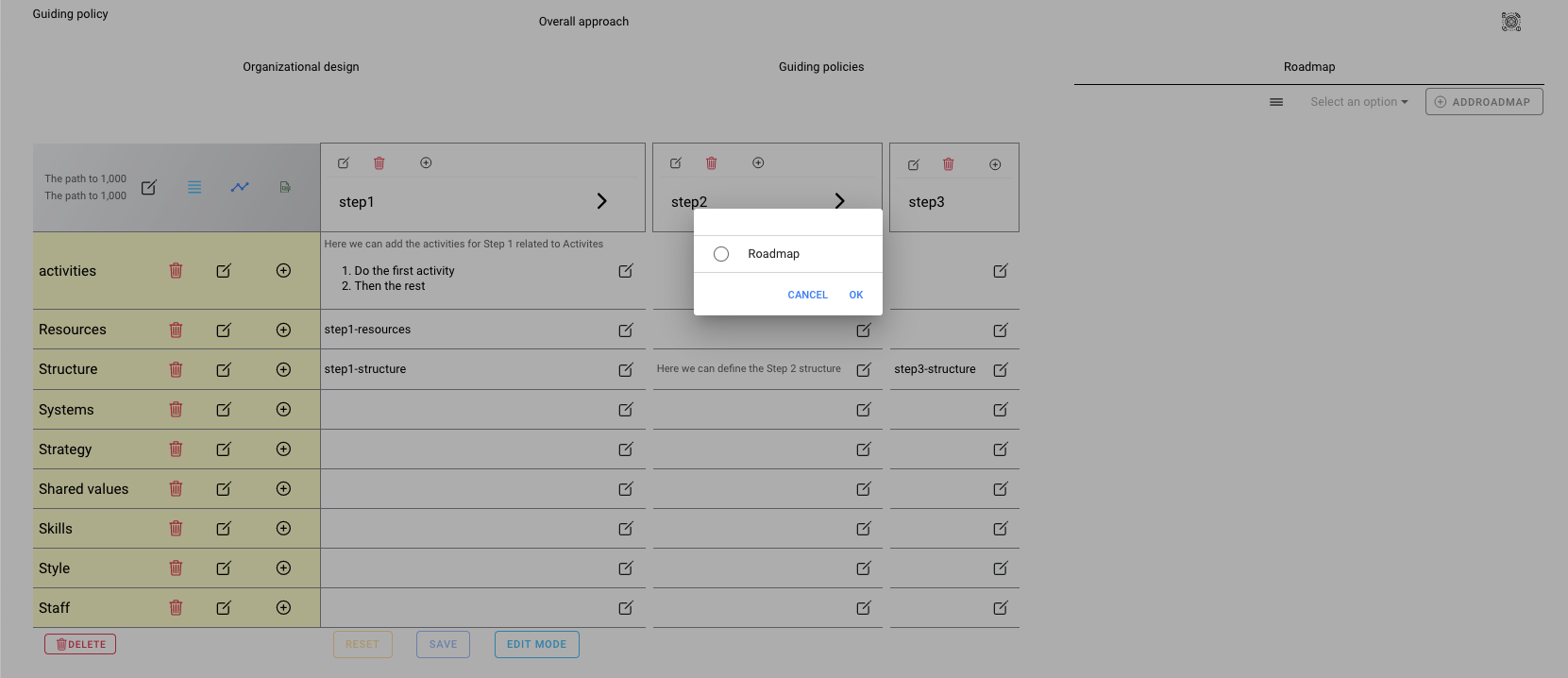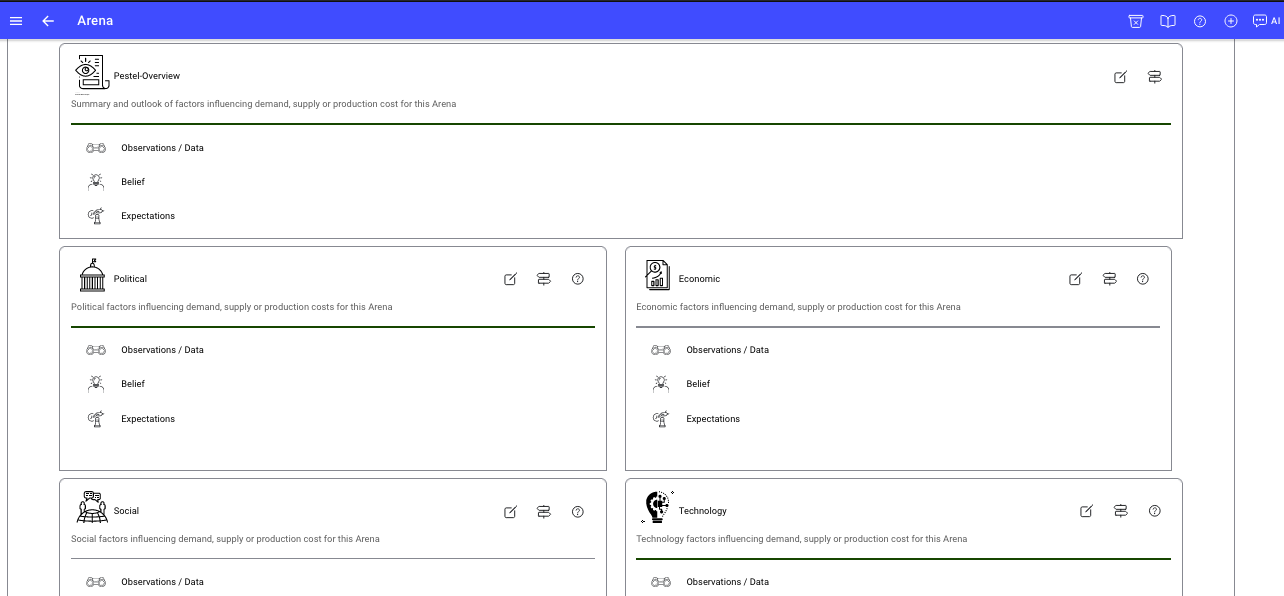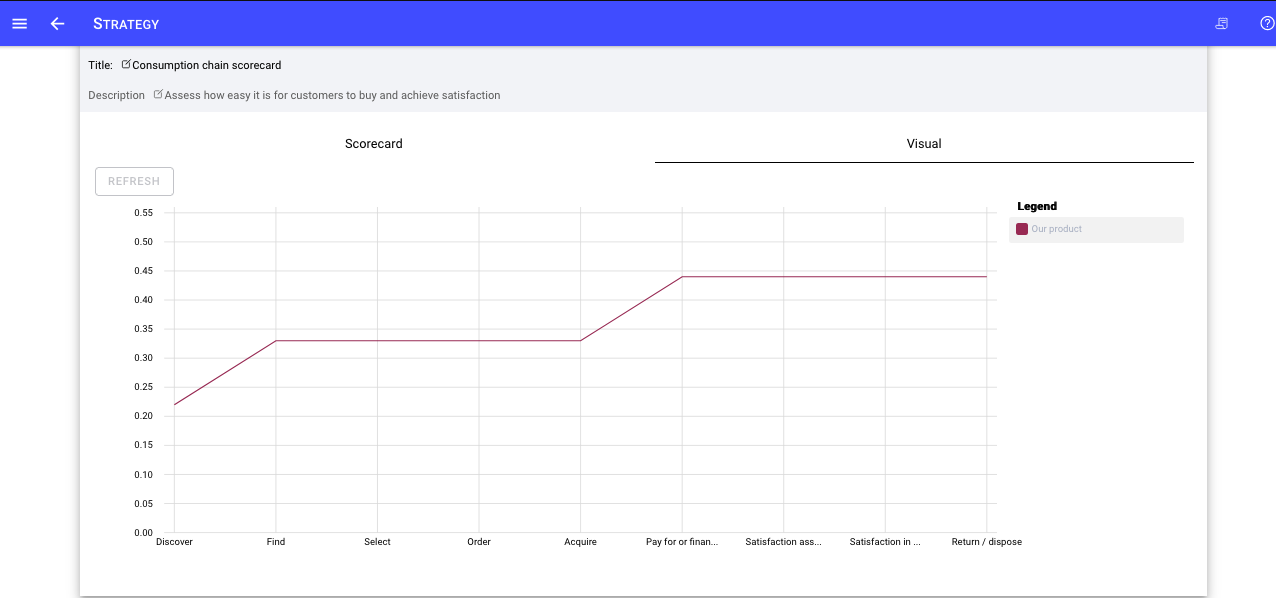In this section
-
Describe the role of the guiding policy
-
Provide an example a guiding policy as part of a strategy kernel to deepen understanding and ability to apply a guiding policy.
-
Describe the relationship to your diagnosis.
-
Describe how you can apply policy to your strategy implementation.
A non-business example to set the scene
Imagine John, John is 40+ and experiencing frequent fatigue, occasional blurred vision, periodic intolerance to physical activity, excessive thirst, and skin and mouth infections.
John has been trying all kinds of actions, including drinking more water, getting more rest, and so on, but nothing has been very effective.
John, finally visits a professional and is diagnosed with Age onset Diabetes Mellitus. With the correct diagnosis, John now has access to the right treatment policy and actions.
Your strategic guiding policy
The purpose of strategy implementation is to offer a potentially achievable way of overcoming a key challenge or challenges between where your business is and where it needs to or could be.
Your guiding policy outlines how you will go about resolving the constraints on fulfilling your business and customer aspirations or achieve the most substantial opportunity accessible to your business.
Your guiding policy is remarkably like a treatment plan you might receive from a physician.
Additionally, in StrategyCAD your policy enables you
-
To align your organizational structures, systems, people, skills, style, shared values to resolve the challenges or opportunities your business faces.
-
Define one or more policies in terms what needs to started, stopped, sustained and reduced. Depending on how detailed or prescriptive you want to be, you might provide an overall policy. The different members of the leadership team may define their own supportive policies for functional areas such as Marketing, Sales, Product Development, Service Delivery, Customer support and so on.
-
Finally, you can add a roadmap to provide a conceptual timeline for the policy implementation.
Steve Jobs returns to Apple
1997 Steve Jobs returns to Apple the company he co-founded to find it just months from bankruptcy.
Assessment
The assessment would have been something along the lines of the company was way too large for the revenue it was earning, it is just months from bankruptcy.
Diagnosis
Apple was poorly differentiated and marginalised from the all powerful WinTel platform i.e. there was little reason for a consumer to buy an Apple product as opposed to an Intel / Windows product and Apple products could not run the popular Microsoft Office product. Apple simply made too many "Me Too" products that were losers and even competed against one another (which confused customers)
Guiding policy
-
Reduce Apple back to a size consistent with its Financial resources, including its staff, products, suppliers and partners.
-
Kill the loosing "Me too" products, with a commitment to no longer create them or rubbish products.
-
Focus the company on the products that it had capability to be great and differentiated at.
-
Re-organize the organizational structure to enable an environment of innovation and eliminate management structures that crushed engineering and product innovation.
-
Monitor and wait for the next substantial opportunity to create a multi-billion dollar product / product line.
Apple of course survived with iMac, worked with Microsoft to port Microsoft Office to the Mac and then when the Napster and pirate music events of 2000 emerged. Apple were not too long in producing the iPoD and became a leader in the digital music distribution business.
Most guiding policies can be partitioned into to what the business needs to do more of, less of, sustain and stop.
Your guiding policy should make sense as an overall approach to resolve the challenge or opportunity the business faces
It is ideally a complete and consistent (each aspect of the policy is supportive of the other aspects of the policy) approach.
See the historic examples - in Diagnosis and Guiding policy (above)
Aligning the internal organization to external needs
One of the most significant tasks of strategy implementation is to ensure the internal structure, systems, resources, activities ( people, skills, style and shared value) are aligned to meet the demands and challenges of the external environment. If the guiding policy and related alignment do not support the needs of the external environment then the business is very likely going to have a big problem.
Adding your alignment policy
From the organizational design tab of the Guiding policy Click the add icon (+). Alternatively, if you already have an organizational alignment policy and you want to link it - then use the link icon.

In the dialog that appears, a title for internal alignment policy, provide a description of the rationale or intent of the organizational alignment and the team that will own its maintenance.
From there you can provide your organizational structure as an organizational chart. The chart does not need go beyond the details necessary to enable the Guiding policy and the action plan.

In the canvas below you have the choice of the McKinsey 7S or Galbraith Star Model or both to specify how your business will align systems, structures, skills, staff, style, shared values, rewards etc. to fulfill the Guiding policy and action plan.
As you did with scorecards in the assessment section you can one or more of activity policies or growth policies.
Growth matrix

StrategyCAD color codes the quadrants to show the lowest to highest risk.
The growth matrix is an Ansoff Matrix. Successful leaders have four options to generate growth. The Ansoff Matrix is a model that helps businesses define and communicate which growth policies, will be used and how. The four quadrants are
-
Market Penetration: This quadrant focuses on selling more of the same products to the same customers by increasing market share.
Lowest risk
-
Market Development: This quadrant involves finding new customers for existing products or services, often by entering new geographic markets.
Next lowest risk
-
Product Development: This quadrant involves creating new products or services to sell to existing customers.
Considered 2nd highest risk
-
Diversification:This quadrant involves entering new markets with new products or services, which is the highest risk option as it requires significant investment and may not have an existing customer base.
Considered highest risk
Activity matrix

The Activity matrix formalizes a policy like the mock policy we created for PepsiCo and Apple when Steve Jobs returned.
The four quadrants are
-
Do more: This indicates what the business needs to start doing or do more to rise to the challenge or opportunity it faces.
The 7S model or the Galbraith Star model supports the doing more policy.
-
Sustain: This quadrant activities the business is currently doing, that it needs to keep doing at the current level.
The 7S model or the Galbraith Star model sustains the doing more policy.
-
Do less: Activities that the business needs to less of. The lessening makes capacity for what needs to be done more and/or these activities do not contribute to sustaining or evolving the business sufficiently to justify their activity current level.
-
Eliminate: This quadrant involves activities that will be eliminated. Recall the example, where the "Me Too" loosing / non-competitive products were eliminated and complexity of products was also eliminated.
Considered 2nd highest risk
Why roadmaps
A roadmap enables you to outline your path, identifying the sequence of significant outcomes or milestones that need to be achieved to take your business from where it is to where it needs to be.
Then for each of those milestones you can identify the activities that need to be completed. Additionally, you can validate the resources, systems (or processes), skills, staff, style, shared values and how the Strategy supports the milestones, plus any other dependencies.
A roadmap can be useful in guiding the action plan ensuring the action plan is viable / achievable.

Adding a roadmap
A roadmap can be useful in guiding the action plan ensuring the action plan is viable / achievable.
Adding a roadmap
A roadmap can be useful in guiding the action plan ensuring the action plan is viable / achievable.













